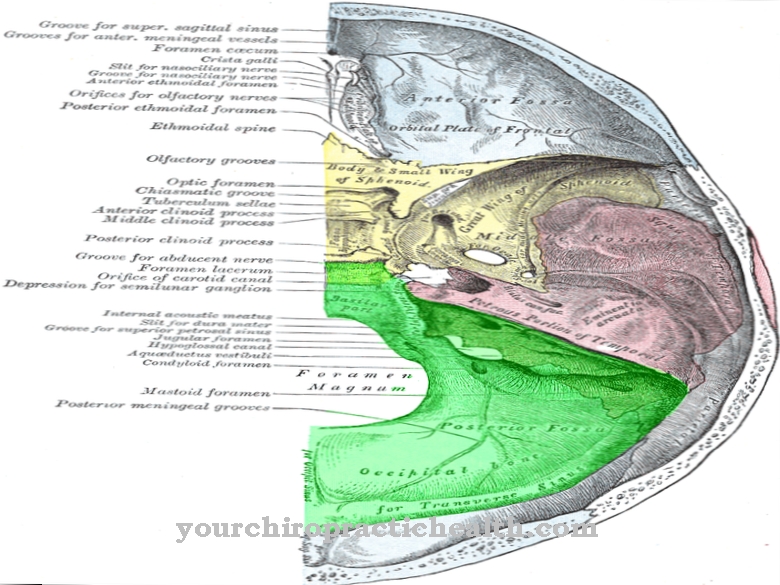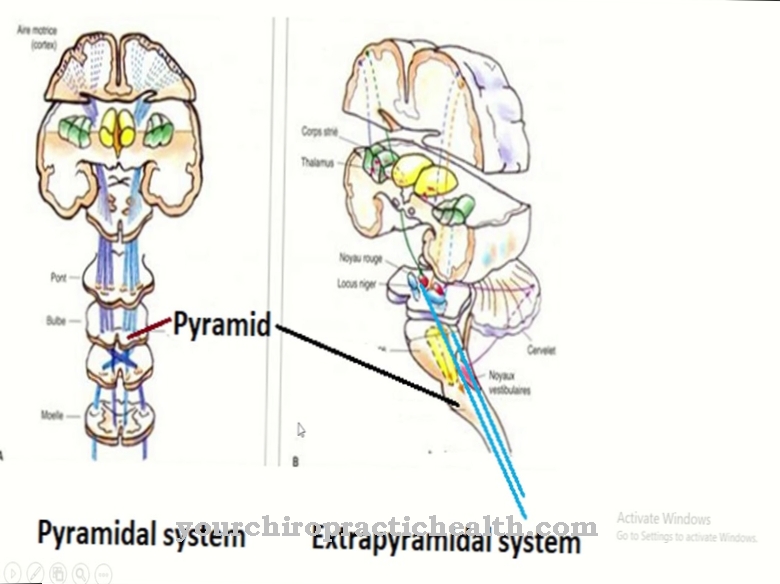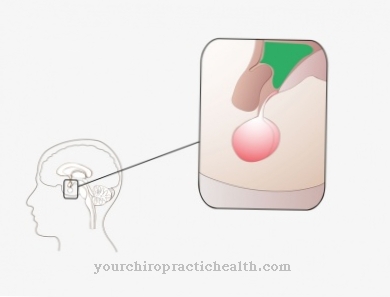As Fovea centralis is called a small depression in the center of the yellow spot on the human retina. It is the region of sharpest vision because the fovea centralis only contains three different types of cones (photoreceptors) for color vision in the wavelength ranges for red, green and blue. The more light-sensitive rods are located outside the fovea centralis.
What is the central fovea?
The fovea centralis embodies the zone of sharpest color vision and is located in the center of the so-called yellow spot (macula lutea) on the retina, which is 3 to 5 millimeters in diameter.
The fovea centralis has a diameter of about 1.5 millimeters and is densely packed with three different color receptors, the S, M and L cones, which cover the spectral range from blue to green to red. The rod-shaped photoreceptors, which are much more sensitive to light, are located outside the central fovea and mostly outside the yellow spot. In the zone of sharpest vision, as the fovea centralis is also called, each individual cone is connected to a bipolar ganglion cell. This enables the visual center of the brain to precisely locate the incident light pulses and generate a sharp, virtual color image.
The 1: 1 interconnection of the photoreceptors achieves the biologically highest possible resolution. In the central area of the fovea centralis, a small area about 0.33 millimeters in diameter, called the foveola, can be made out. The Foveola only contains the particularly slim M and L cones, which are densely packed in this area and whose highest light sensitivity is in the green to red wavelength range.
Anatomy & structure
The fovea centralis, the region with the sharpest color vision in the retina, is anatomically designed in such a way that the necessary support structures are largely shifted to the edge area in order to achieve the closest possible packing with cone-shaped color receptors.
There are up to 6 million color receptors within the yellow spot. This means that there are an average of around 240,000 color receptors per square millimeter. In the Foveola, the “packing density” with M and L receptors is much higher. The foveola is surrounded by an area about 0.5 millimeters thick, called the parafovea. In the parafovea, the bright, rod-shaped photoreceptors already mix with the cones in a ratio of 1: 1. The ring-shaped parafovea is connected to the outside by the perifovea, which, depending on the author and definition, has a ring width of 1.5 or 3 millimeters.
The outer boundary of the perifovea also represents the outer boundary of the macula lutea. The density of cones decreases considerably in this area, while the density of rods increases sharply. In healthy people, the visual axis runs through the central fovea, on which the oculomotor muscles, the tiny control muscles of the eyeball, orient themselves.
Function & tasks
The main task and function of the fovea centralis is to provide the visual centers in the brain with the most accurate possible local information about incident light impulses including their wave spectrum. From the nerve impulses received, the brain can construct a virtual image that is as sharp and colorful as possible under the lighting conditions from daylight to bright twilight.
It is in fact a virtual image, as there is no real projected image on the retina or anywhere in the brain. The 1: 1 interconnection of the photoreceptors with bipolar photoreceptors, each of which has only one axon and one dendrite, is particularly helpful for generating a sharp image. In foveal vision, evolution relies entirely on daylight conditions, because in the fovea centralis almost exclusively the faint cones are present as photoreceptors.
The partially unconscious oculomotor function, which always strives to be able to detect "worth seeing" objects via the fovea centralis, is counterproductive in dark twilight and in the dark because there are practically no light-sensitive rods within the fovea centralis and the cones for excitation are not are sufficiently sensitive. In order to be able to “see” an object in the dark twilight, it is advisable to consciously look past the object, because then there is a chance of being able to perceive the object with peripheral vision.
You can find your medication here
➔ Medicines for eye infectionsDiseases
Diseases and complaints in connection with the fovea centralis mostly concern degenerations of the retina in the area of the macula and thus also in the area of the fovea centralis or retinal detachments.
The most common form of macular degeneration is age-related macular degeneration (AMD), which initially leads to a functional impairment of the so-called Bruch's membrane. This triggers a small cascade of further problems, which ultimately leads to a loss of function of the photoreceptors in the area of the macula lutea. AMD affects men and women equally. The visual impairment caused by AMD affects only central foveal vision. The blurred, monochromatic peripheral vision is retained. The exact causes that lead to the triggering of AMD are not (yet) sufficiently known.
It is noticeable that familial clusters are observed, so that genetic dispositions very likely also contribute to the onset of AMD. In rare cases, macular degeneration also occurs in adolescence, as in the very rare Stargardt's disease, in the course of which there are conspicuous deposits in the pigment epithelium of the retina. In the area of the macula or fovea centralis, edema, accumulations of tissue fluid that can be traced back to various causes, can form.
The build-up of fluid can lead to impaired vision, which in many cases is reversible once the cause of the edema has been corrected and the edema itself corrected.
























.jpg)



